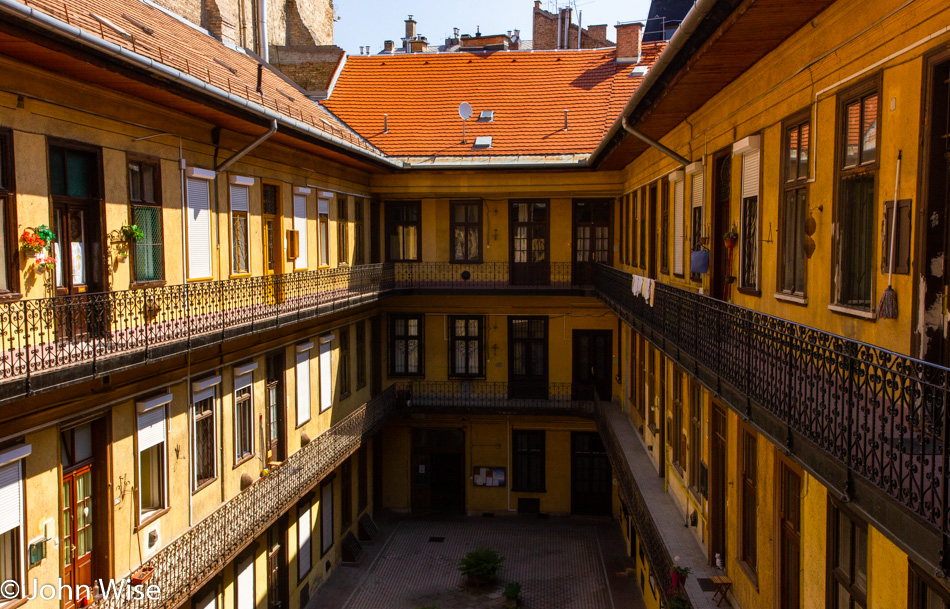
This was the view from the front door of our Airbnb here in Budapest, and who wouldn’t agree that this was a thousand times more authentic than the sterile and generic view inside a hotel that could be had anywhere on Earth? Not feeling like we need to make any last-minute visits to something we missed, we are content to go grab some breakfast and a coffee and get moving up the road to our next stop on this cross-Europe road trip.
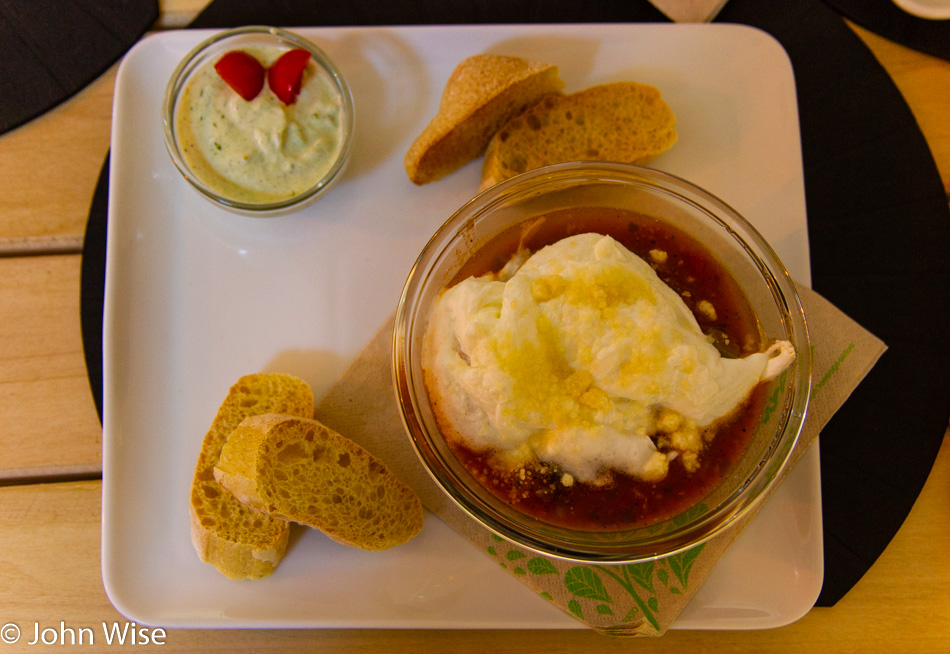
The plan was to grab a quick breakfast at California Coffee Company around the corner from the room and near our parking garage; that was until I spotted that another cafe called Nyakleves featured shakshuka (poached eggs in a roasted pepper and tomato base) on the menu. The first time we had shakshuka, it was lovingly made by Giovanni Scorzo at Andreoli Italian Grocer, but our friends Itay and Rotem made shakshuka twice for us before they moved from Arizona to Los Angeles and left us with wonderful memories of a meal shared with friends. In honor of all three of these terrific human beings, we are having the most mediocre shakshuka we should ever have to endure, but it did bring Giovanni, Itay, and Rotem into our thoughts, so there is that.
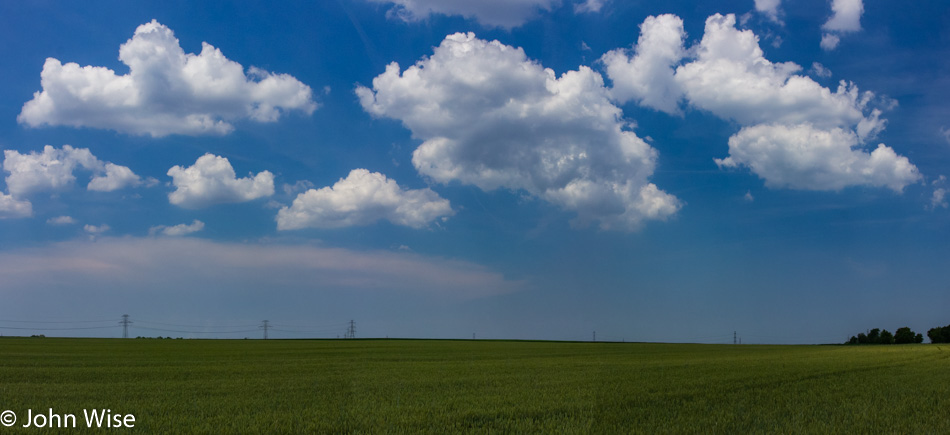
It’s not uncommon for our vacations to remove us from the bustle of city life, even if it’s away from the half-hearted sun-baked version found in America’s fifth-largest city of Phoenix, Arizona, that hardly qualifies as a real city when compared with some of the places we’ve visited that are thriving with life. So finding ourselves out here on the rolling plains of Hungary looking at corn growing as far as the eye can see hearkens at the fond memories of being off the beaten path, even if it’s only for a few hours.
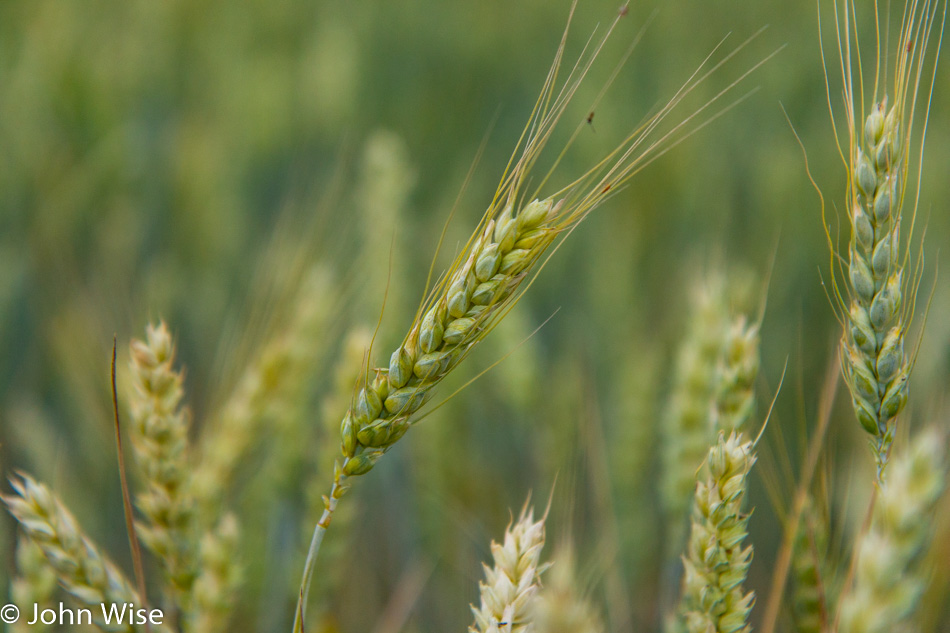
This is not the first field of wheat we’ve passed and have seen in all stages of growth. We’ve also passed fields of beans, kale, a ton of grapes, and some other crops we didn’t have time to stop and figure out what they were.
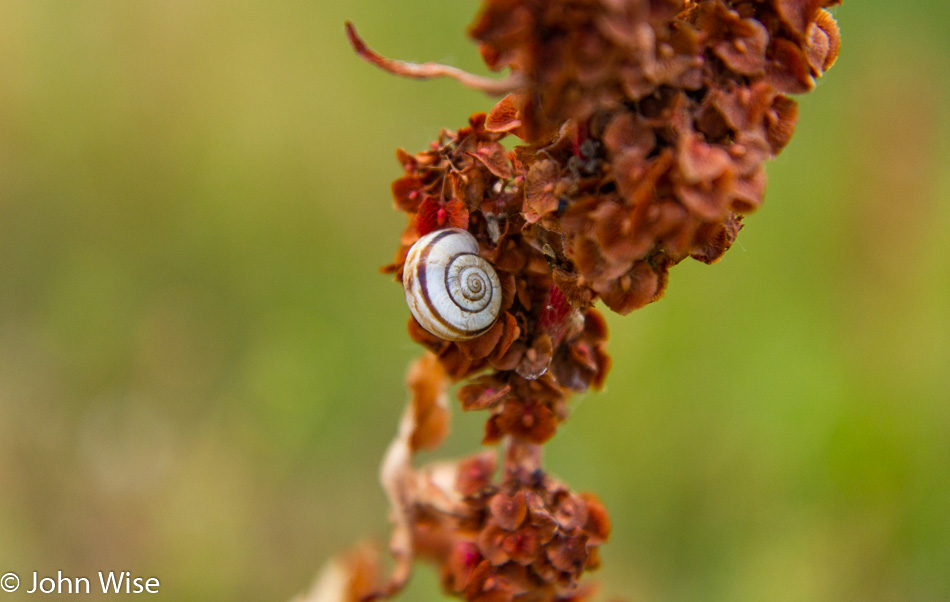
We were probably driving about 90 mph or 145 kph when I spotted this snail attached to this reddish plant, and the contrast was so striking that I skidded to a full stop, ending up taking out a loaf or two worth of wheat that had been destined for bread but are now pressed into the soil, but I have my picture of this snail. Maybe you are thinking, “What’s the big deal?” Well, how many times have you seen a white-shelled snail attached to a red plant in Hungary? Never, right? That was my answer, too, but now I have proof that I was there, saw that, done that, so there.

In Europe, you drive a couple of three hours, and blam, you are in a new country just like that. Because we left Budapest early today, we felt we had some extra time to meander our way to Vienna, and so we decided to take in country number seven on this journey across the old country. Welcome to the Republic of Slovakia for those of you who cannot read Slovak.
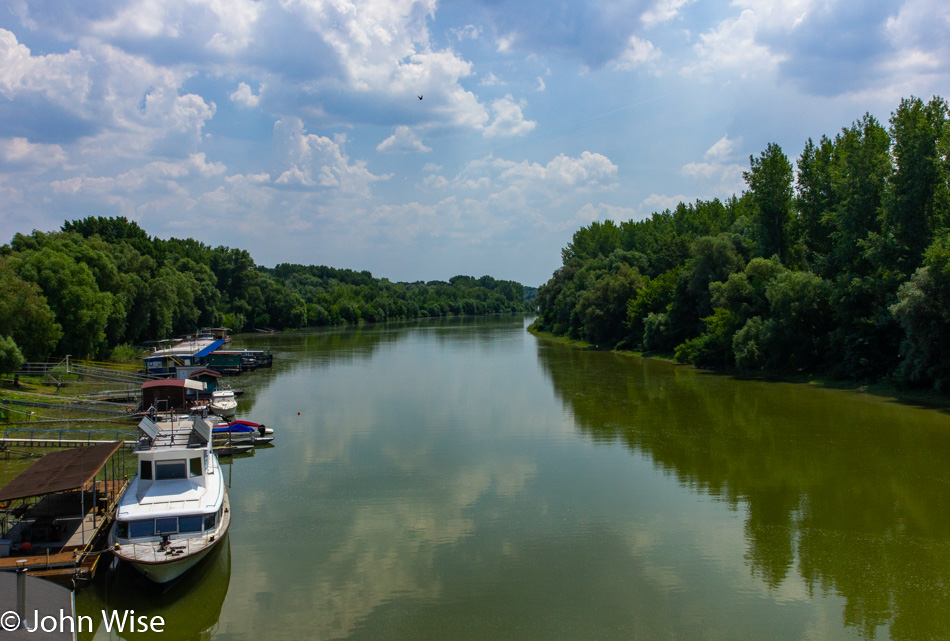
That bridge that was just ahead in the previous photo was going over this small arm of the Danube. Matter of fact that last photo was taken on a small island that’s on the main channel of that famous river. True, it is the less-famous arm of the Danube, but I thought it looked nice all the same.

Speaking of looking nice, how does Caroline look knitting in public and sipping a beer while in Slovakia? While the “Worldwide Knit in Public Day” was still eight days away, Caroline was getting her practice in so she could make a proper impression upon the world when June 9th rolled around.
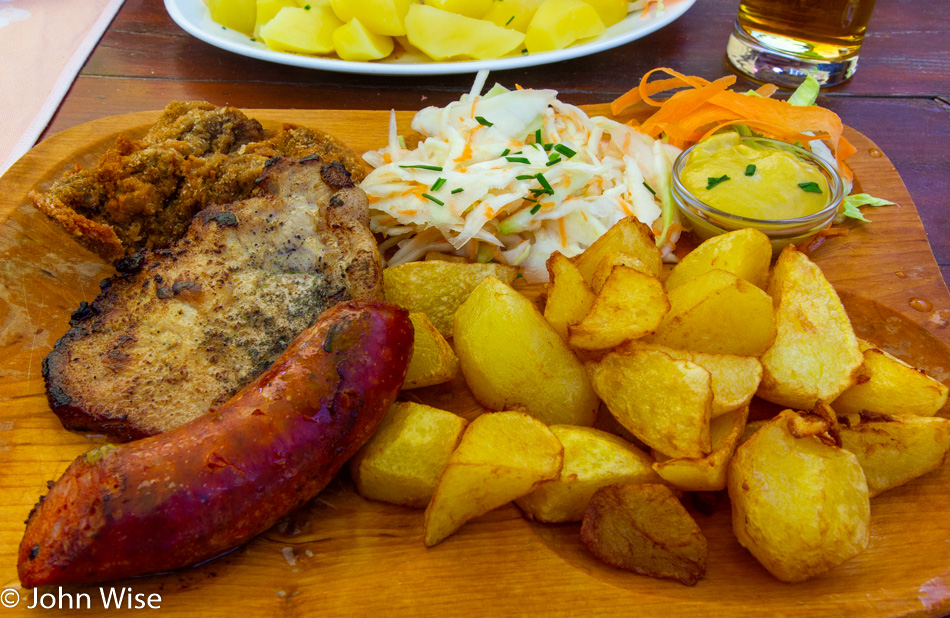
Our stop was in the village of Gabčíkovo at Pension Hóstád for lunch. Today’s mid-day meal photo is my dish: it was the pork platter of blood sausage, pork liver, and cutlet with potatoes.

Caroline’s need to obey the rules (it’s a German thing) had her being a little leery about crawling up a levee to catch a glimpse of a shipping channel that reroutes some of the waters of the Danube. With the American belligerence of her husband (me), I assured her it was perfectly okay, even if it wasn’t explicitly allowed by a sign stating so. Turns out that this waterway is controversial due to environmental issues that the Hungarians figured out after Slovakia began work on their leg of the shipping lane. The overall project remains incomplete, and we didn’t have to go to jail for trespassing.
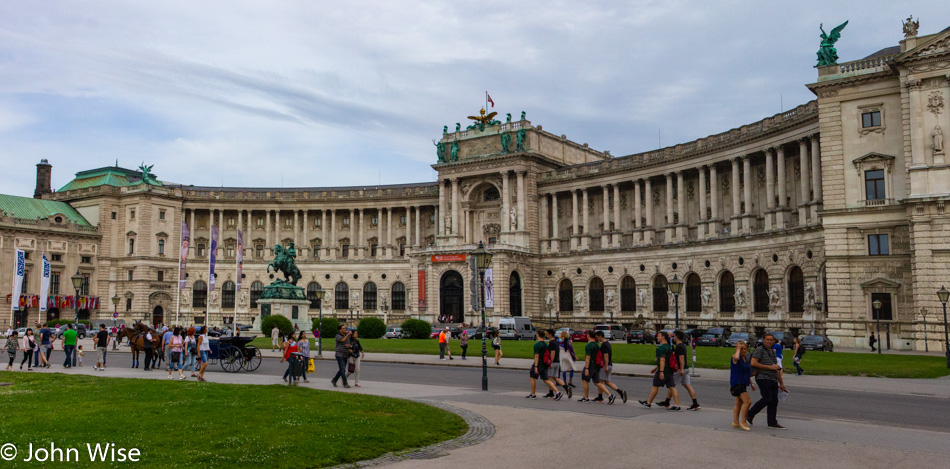
Our arrival in Vienna, Austria, is under gray skies, but on the horizon, we have hints of blue that look to be encroaching on the cloud cover. This is the Hofburg Palace built back in the 13th century and was the seat of power of the Habsburgs.
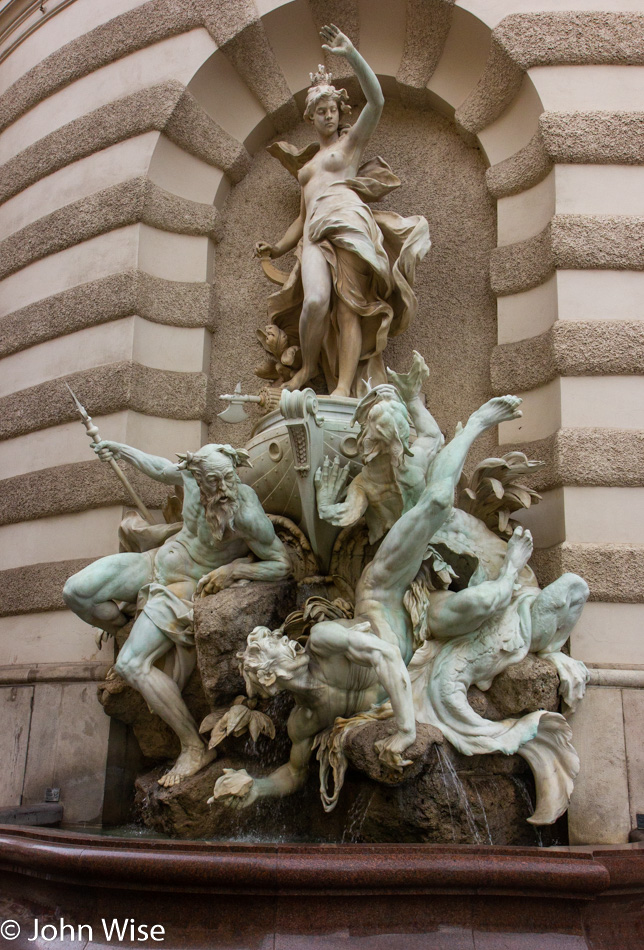
This statue is now 123 years old and is named “Die Macht zur See,” which in English means “Power at Sea.”
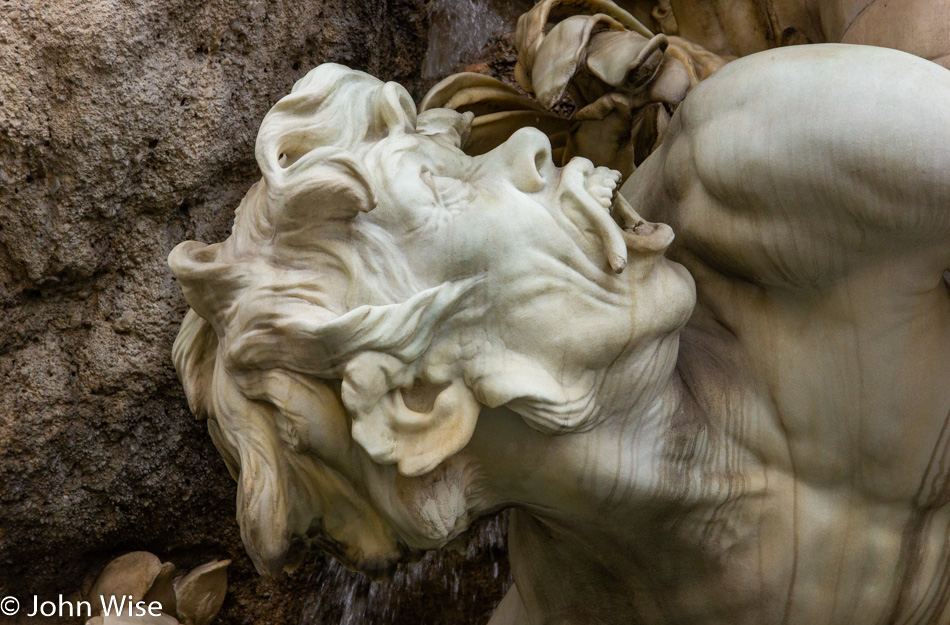
Close up detail of “Die Macht zur See.”
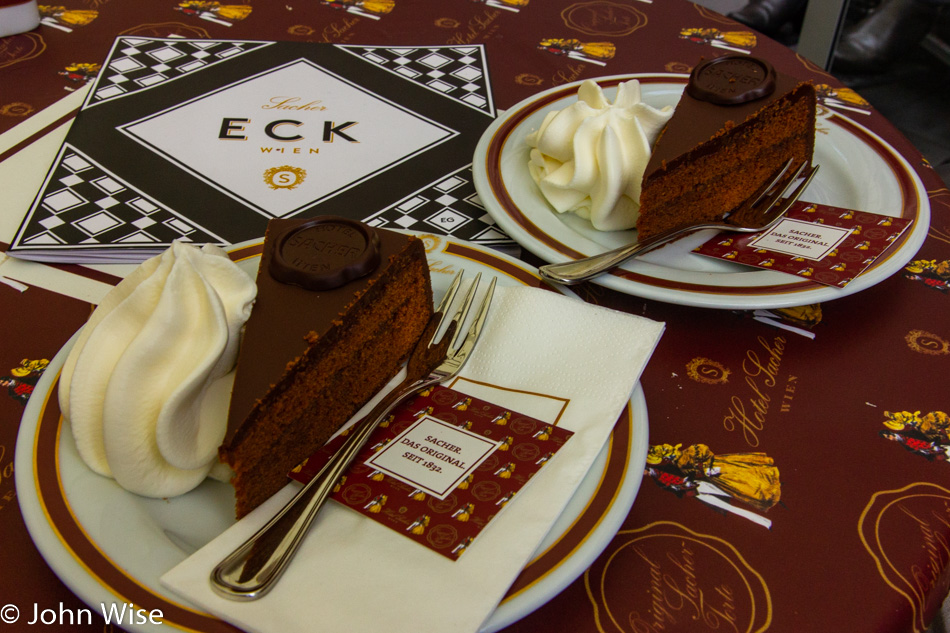
We didn’t linger as we walked from our apartment to Cafe Sacher. For months now, we have been waiting for this moment to land in Vienna to try the two competing recipes that lay claim to being the original Sacher Torte. This particular cake was perfected by Austrian Franz Sacher back in 1832 for Prince Wenzel von Metternich in Vienna. Over one hundred years later, the bragging rights of who was the most authentic of the two competing recipes settled out of court, and today, we are trying one of them. This chocolate cake with apricot jam and dark chocolate is served with unsweetened whipped cream. Our verdict is that this cake is great, and though we love our first try, we are still looking forward to trying the version from Demel.
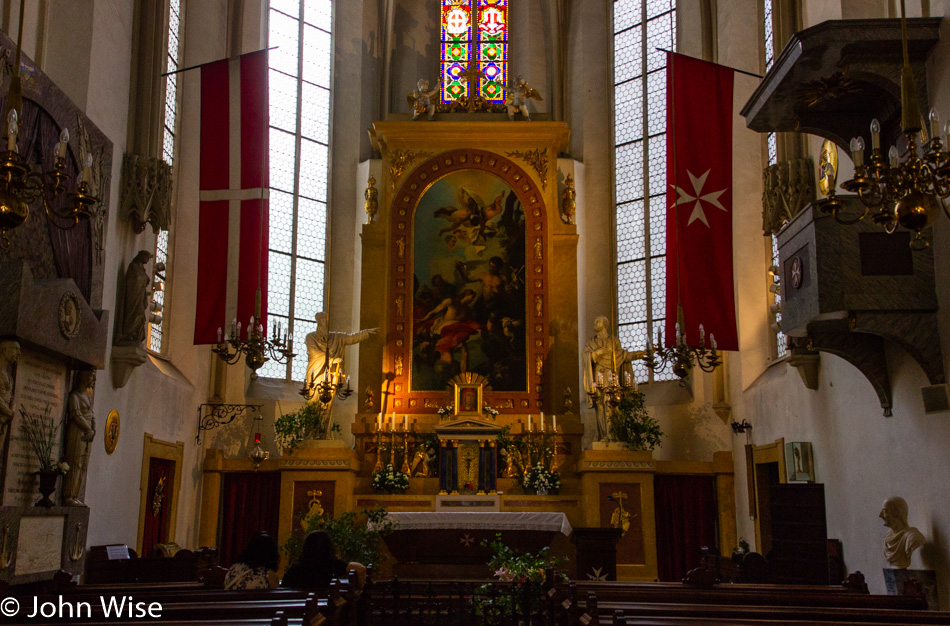
The first small church we visited was the Maltese Church, or Church of Saint John the Baptist. While there was a church on this site as early as 1217, it gave way for the current building that was built in the 15th century, and then by 1806; it was rebuilt into the current design we see now.

The reflection of the old in the new wasn’t lost on us that this view could have only ever been seen here in modernity as our ancestors never worked with glass facades. What you don’t see in this photo is that Caroline and I are in a sea of humanity with 10’s of thousands of people on the main shopping thoroughfare here in the center of Vienna.
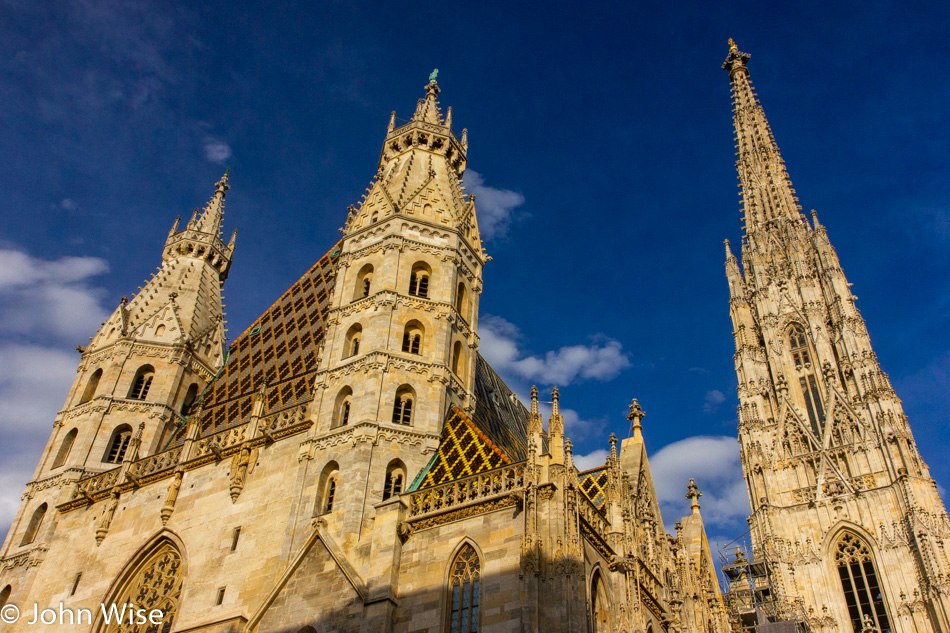
While you may not be able to decipher it in the previous picture, St. Stephen’s Cathedral is the church that is reflected in part of the glass. This church, sitting upon two older churches, was built between 1137 and 1160, though continuing construction would go on for a few more centuries. The Wikipedia article about St. Stephen’s is full of great information and I highly recommend reading it before you go and reference it while you are visiting. By the way, remember what I was saying about the clearing skies a little bit ago?
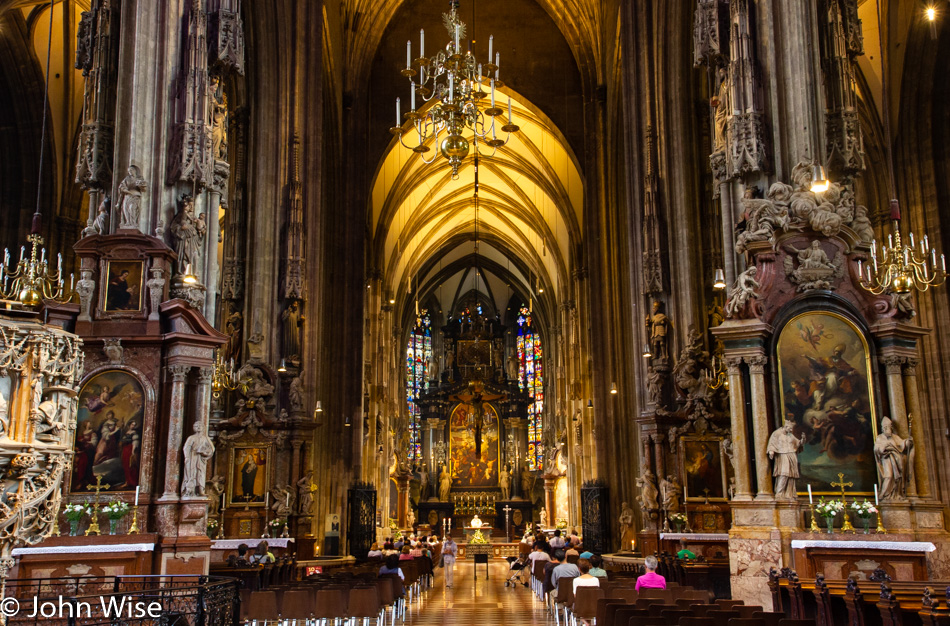
The church contains 18 altars so me showing you one or two won’t give much away about what you will see here should you be so lucky to take in a visit to St. Stephen’s. You are looking at the high altar that was built from 1641 through 1647.
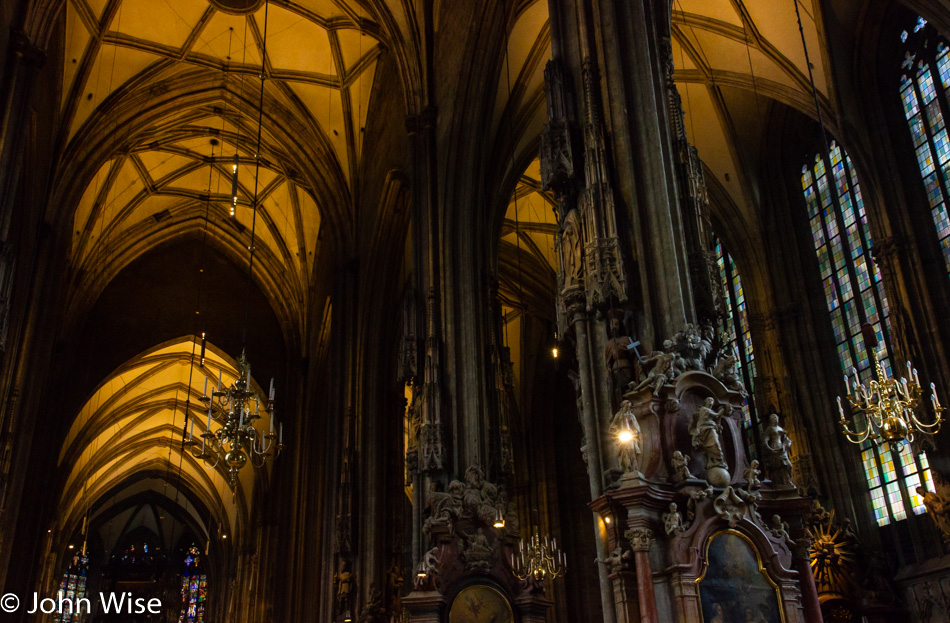
It seems the builders of St. Stephen’s started with something gothic in mind and then some baroque fellows came along and ornated the place up. Of course, this is just speculation on my part because I can’t legitimately tell you the parts of a grass hut with any authority, so take my words as more entertainment than knowledge.
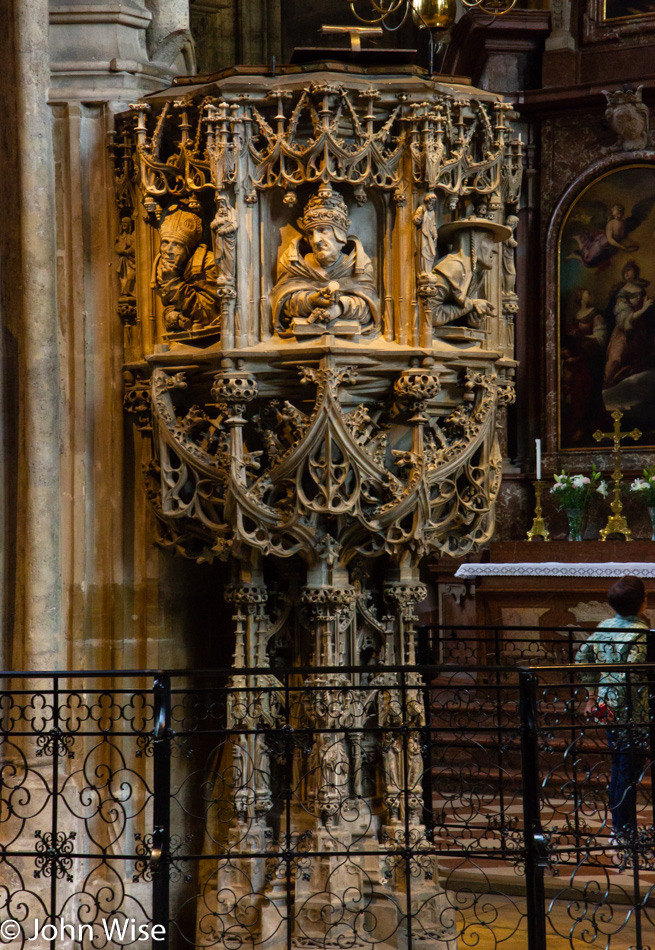
Dear Pope, I’m enchanted by the architecture and history found in the many places of worship that your organization of Catholic believers visits, and am humbly requesting sponsorship of my travels and lodgings for the period of three years in order for me to visit some of the greatest churches and basilicas and study them so that I may write what it will have been like to spend so much time in the solemnity, art, culture, architecture, treasures, and spirituality of your finest buildings. Sincerely, John Wise.
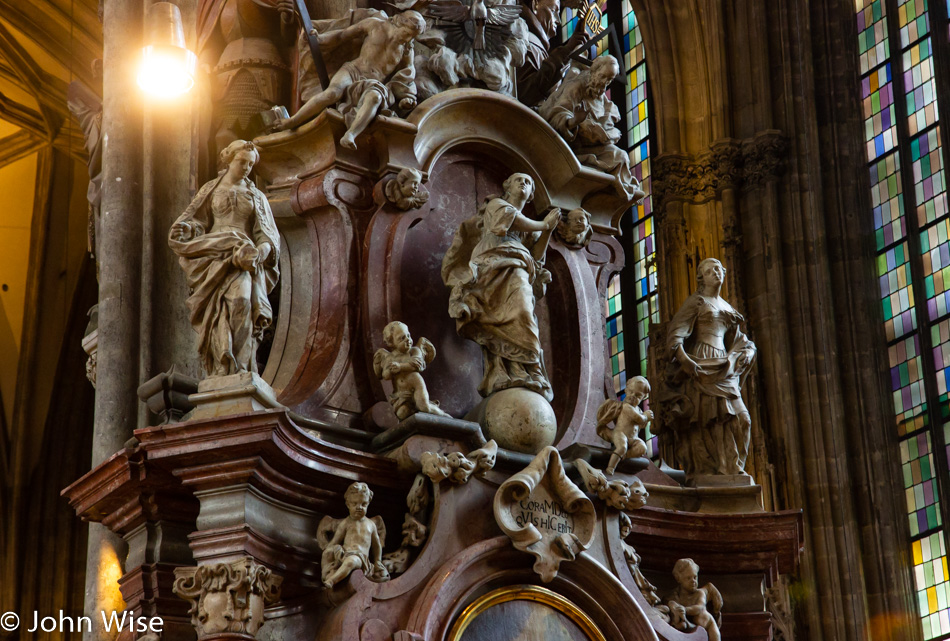
Well, our game of visiting every church we spot might prove difficult to blog about without veering into nonsense, as I’m starting to run out of stuff to say to accompany the images I would like to share. The easy road would be to limit how many photos from church interiors I post, but I seriously desire to have these reminders being part of a narrative and timeline that allows me to revisit every day of our Europe 2018 road trip. Part of the problem might also be the jet lag I’ve encountered since getting home. The first posts of this trip were written by me nearly in real-time and were often posted the next day – well, that worked for the first week, nearly. Once we had picked up the rental car and left Frankfurt, impressions became intense, and free time to write was rare. Since arriving back in Arizona, I’ve managed, at best, to pen about 5,000 words as my brain wants to be uncooperative with my desire to share my thoughts.
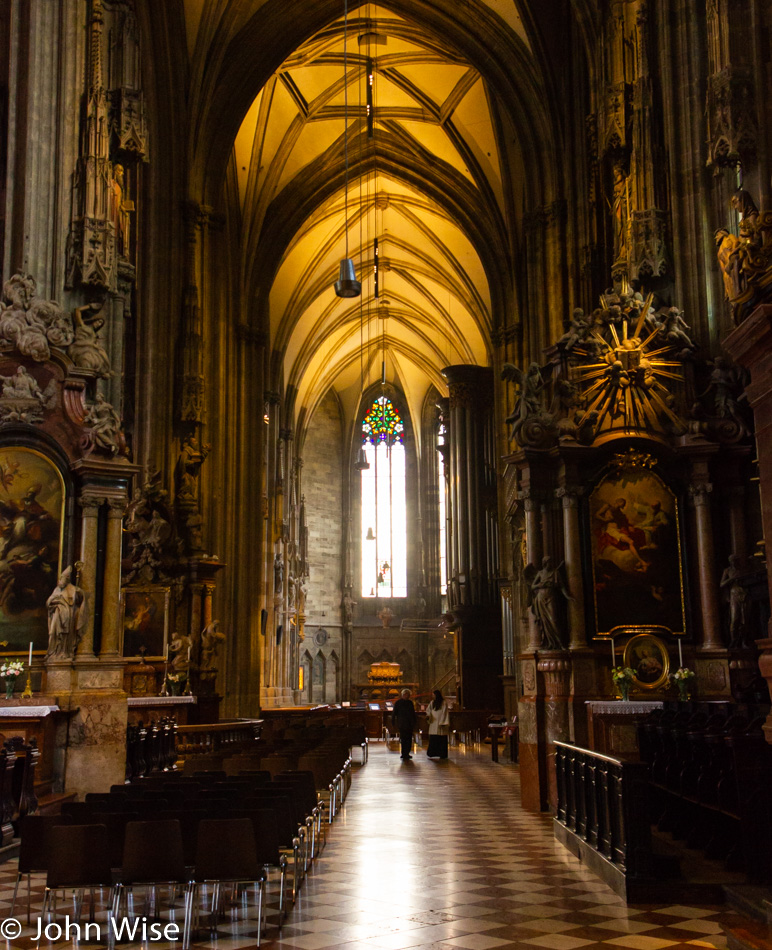
Having seen much of this church it must be time to go visit another.
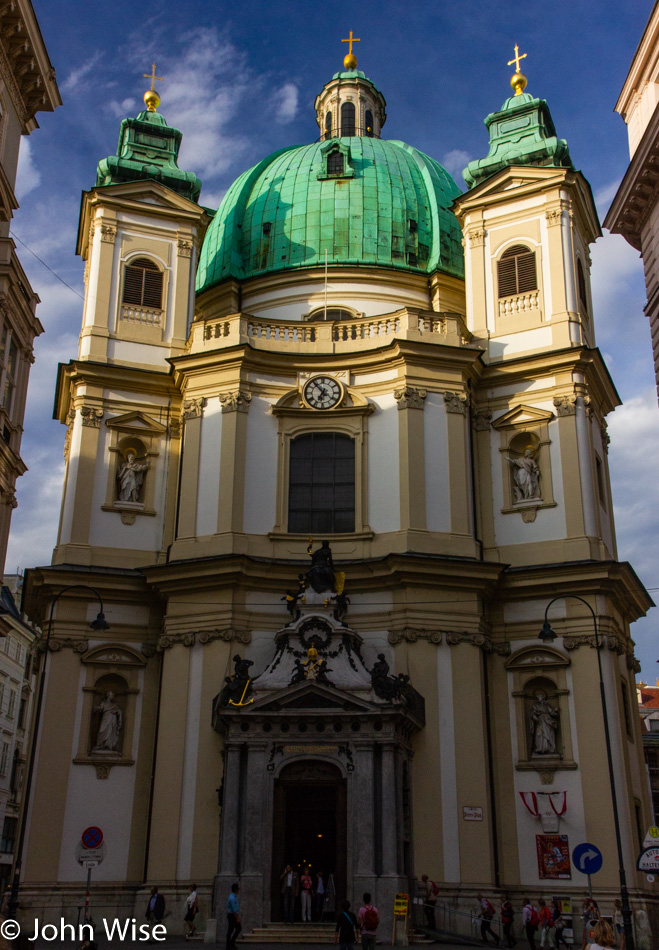
This is St. Peter’s Church and is relatively modern in comparison to some of the churches we’ve already visited. Baroque in its architecture, St. Peter’s, was completed in 1733 after only 22 years of construction. Today, it is operated by the priests of Opus Dei.
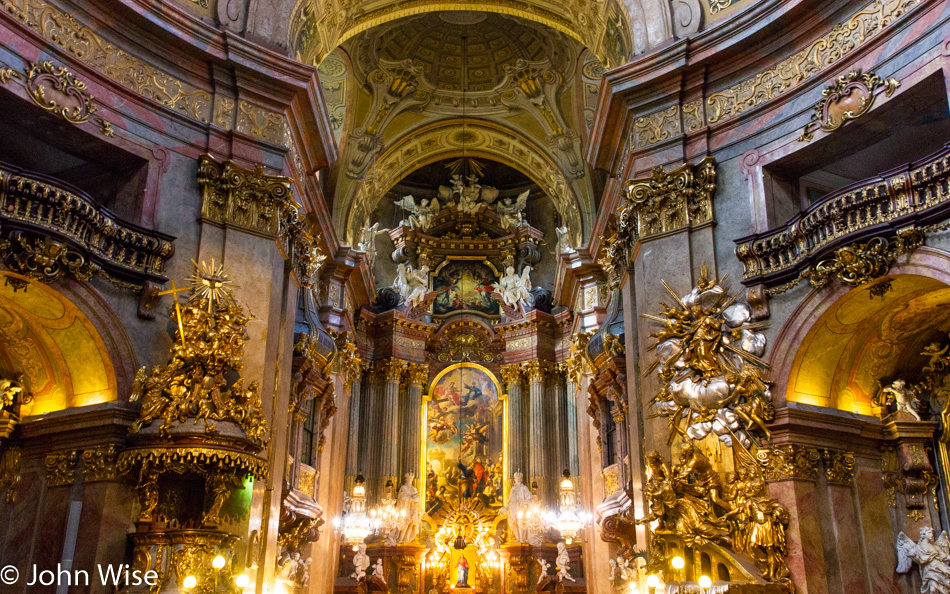
While the exterior of the church is compact and largely obscured by surrounding architecture, the interior is mind-boggling in its rich and ornate offering to the senses. Lucky for modern visitors, when renovations were undertaken in 1998 through 2004 it was said that much of the artwork and interior was darkened and had lost its luster. That is obviously not a problem today.
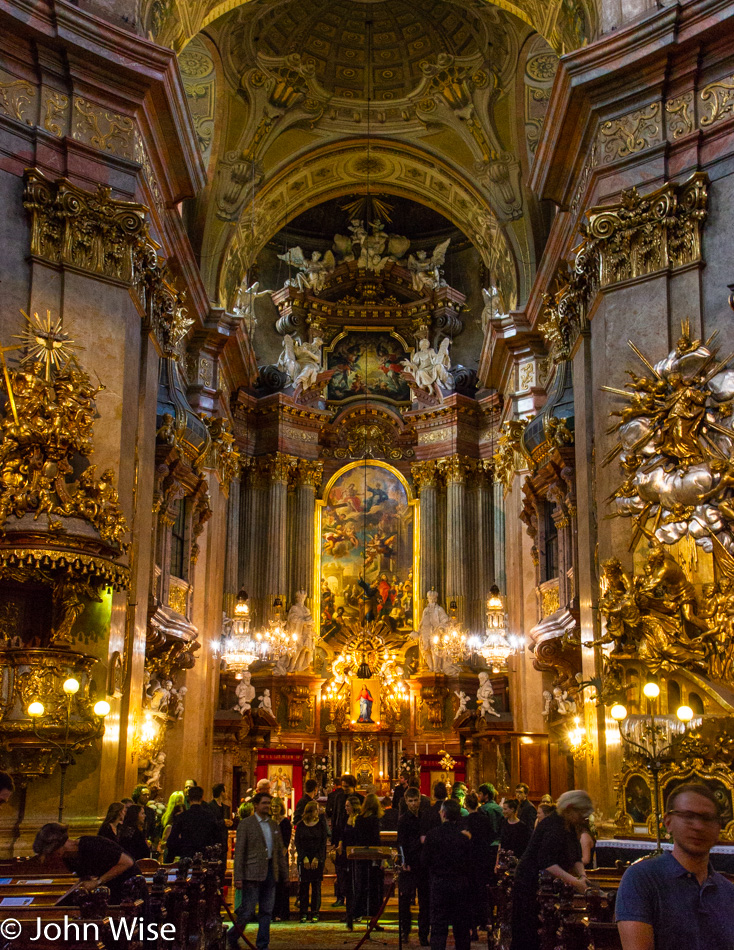
As we were visiting, a group of people in black suits and dresses started gathering at the front of the church. This was either the setting for something diabolical about to happen straight out of the movies or maybe we were in for something special.

While nothing stands up against time that has been created by us humans, and everything suffers decay, it would be great if future generations, a thousand years from now, were also able to witness what beautiful creations our ancestors were able to bring to our reality amongst their dealings with pestilence and obsessions with war and destruction.
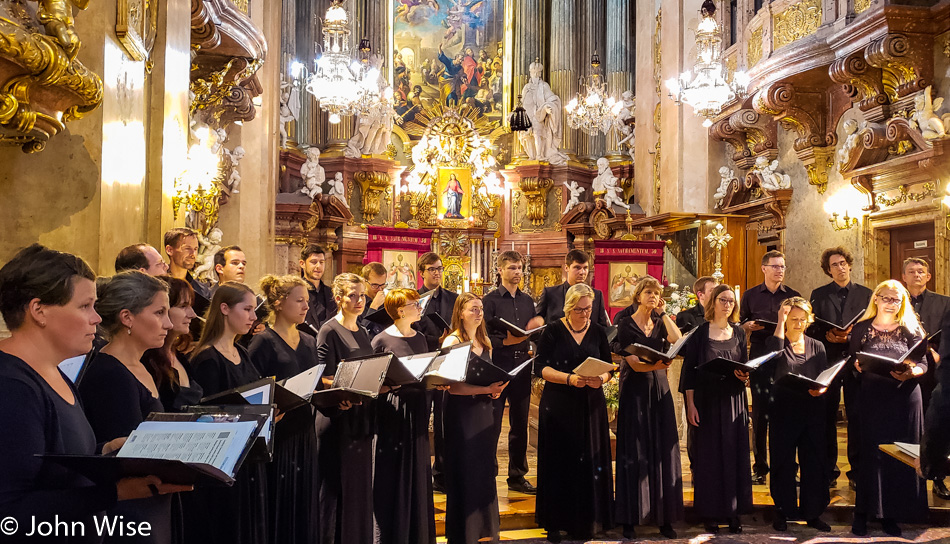
The group that was amassing at the front of the church was a choir. There was a concert scheduled for later in the evening, and the choir was rehearsing for their performance; we just happened to be so lucky that we were visiting right then and were able to take in a free sample of what the even luckier audience was going to be able to listen to this evening. It appears that St. Peter’s hosts frequent music performances, so a visit to their website before and during your visit to Vienna should be in order.

Just as coffee houses are integral to the Viennese culture so are the fiaker. The word “fiaker” comes from the French word “fiacre” back when Nicholas Sauvage, a coach-builder from Amiens, France, set up a business in Paris in front of Hotel de Saint-Fiacre renting out horses and carriages as an early form of taxi. Today, across the center of Vienna, they are a romantic throwback to a simpler and slower time when, for those who could afford it, it was a much quicker way to get around the capital city.
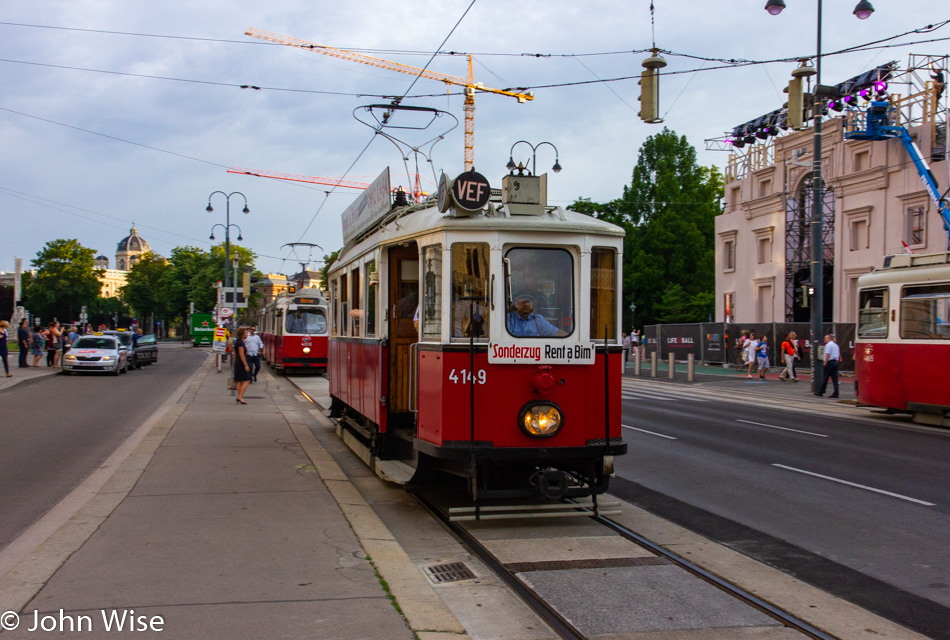
Today, the fiaker competes with subways, trams, bicycles, and motorcycles (though maybe nowhere like in Italy) for getting around Vienna.

As the sun begins to set on our first day in Vienna the cloud cover has started to return, though no rain accompanied it.
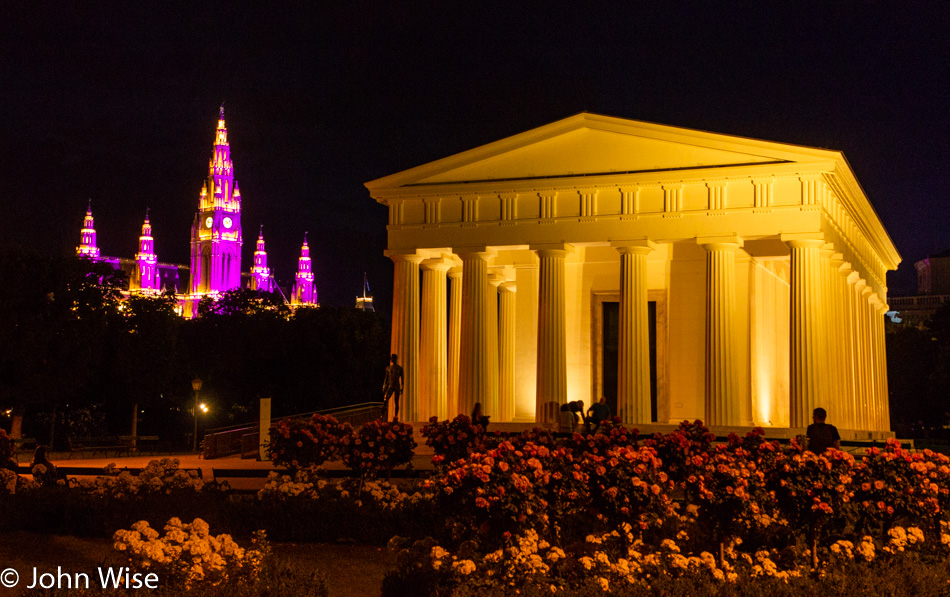
We just so happened to time our arrival in Vienna with the beginning of Life Ball 2018. This is the largest charity event in Europe for supporting people with HIV and AIDS. While formally getting underway tomorrow, the city is already buzzing with the party-goers. City Hall is lit up in purple on the left in anticipation of the Life Ball festivities.

We discovered a phenomenon where it seems that no matter which street or direction we go during our stay in Vienna we kept ending up in front of the Hofburg.
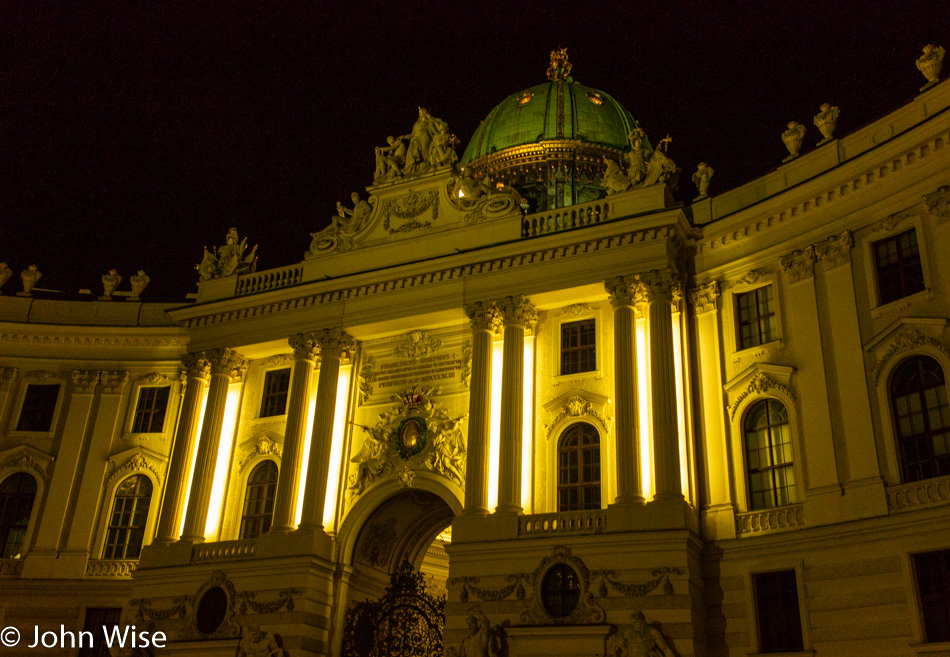
The Habsburgs left their imprint of luxury all over this city.
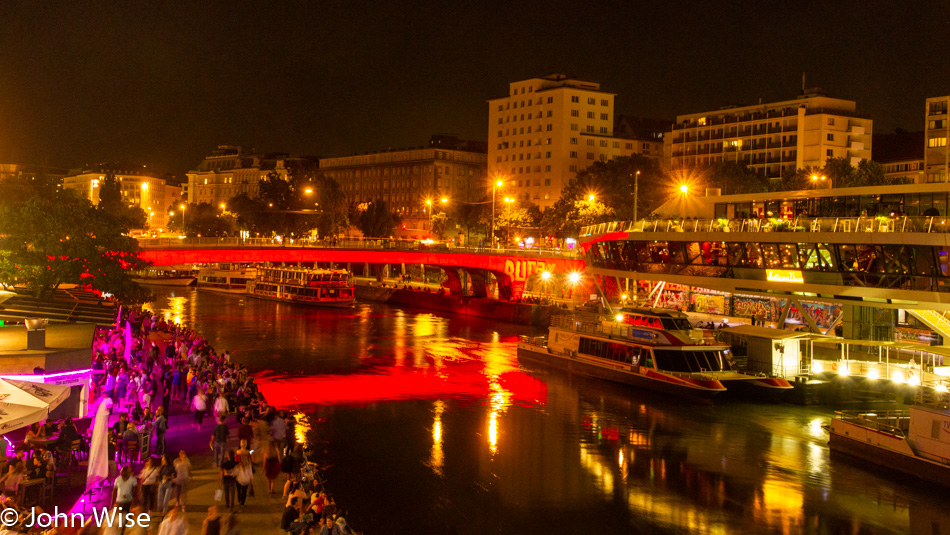
It’s 11:00 p.m. when we reach this side channel of the Danube that cuts into Vienna, and along its banks are thousands of people sitting in cafes, bars, or right at the water’s edge as they drink and meet with friends into the night.
Walking stats: 20,400 steps for 9.5 miles or 15.4 km and only climbed 16 floors.